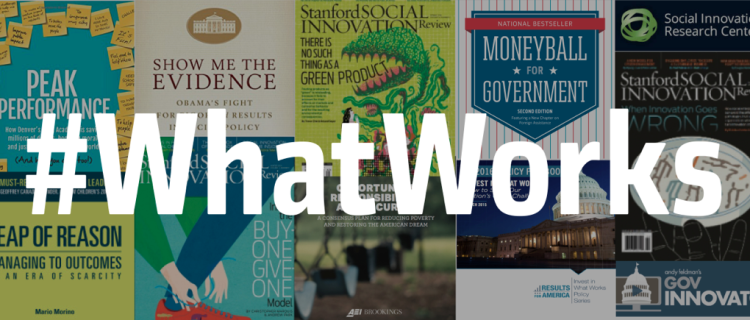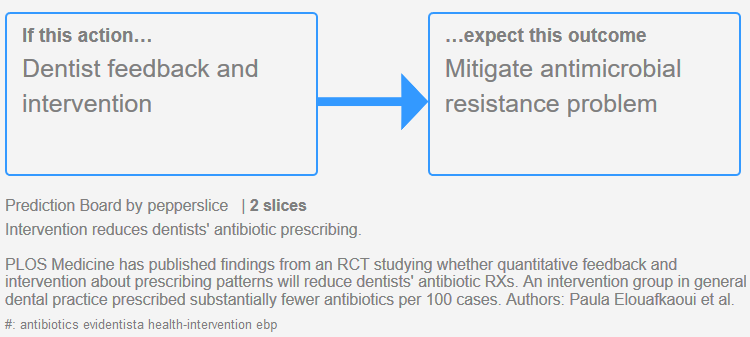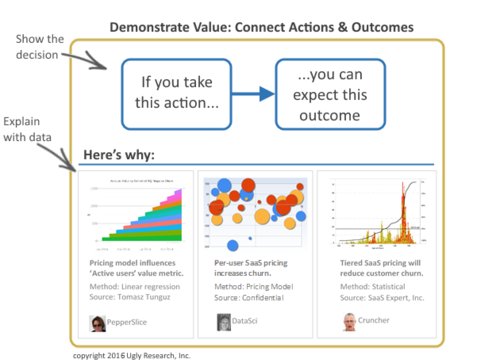Recent developments in evidence-based decision making in the nonprofit/social sector. Practical ways to discover and exchange evidence-based insights. References, resources, and links to organizations with innovative programs. Data-Driven is No Longer Optional Whether you’re the funder or the funded, data-driven management is now mandatory. Evaluations and decisions must incorporate rigorous methods, and evidence review is […]
When presenting findings, it’s essential to show their reliability and relevance. Today’s post discusses how to show your evidence is reproducible; next week in Part 2, we’ll cover how to show it’s relevant. Show that your insights are reproducible. With complexity on the rise, there’s no shortage of quality problems with traditional research: People are […]
1. Present controversial evidence with just one slide. Throw out your slide deck and try the Extreme Presentation method, developed by Andrew Abela and Paul Radich during years of presentations at Procter & Gamble, McKinsey, and other leading companies. The technique involves first showing the audience the big-picture concept so they’ll immediately have a sense […]
1. When nudging fails, what else can be done? Bravo to @CassSunstein, co-author of the popular book Nudge, for a journal abstract that is understandable and clearly identifies recommended actions. This from his upcoming article Nudges that Fail: “Why are some nudges ineffective, or at least less effective than choice architects hope and expect? Focusing primarily […]
1. Crowdsourcing → Machine learning → Micro, macro policy evidence Premise uses a clever combination of machine learning and street-level human intelligence; their economic data helps organizations measure the impact of policy decisions at a micro and macro level. @premisedata recently closed a $50M US funding round. 2. Data blindness → Unfocused analytics → Poor […]
The driving force behind MDRC is a conviction that reliable evidence, well communicated, can make an important difference in social policy.” -Gordon L. Berlin, President, MDRC 1. Slice of the week: Can behavioral science improve the delivery of child support programs? Yes. Understanding how people respond to communications has improved outcomes. State programs supplemented heavy […]
1. Visualizing networks. @Polinode builds innovative tools for network analysis. One nifty feature allows creation of column charts using a set of nodes. A recent post explains how to use calculated network metrics such as centrality or betweenness. 2. Analytics are disconnected from strategic decisions. An extensive study suggests analytics sponsors are in the trough […]
Dentists will slow down on antibiotics if you show them a chart of their prescribing numbers. Antimicrobial resistance is a serious public health concern. PLOS Medicine has published findings from an RCT studying whether quantitative feedback and intervention about prescribing patterns will reduce dentists’ antibiotic RXs. An intervention group prescribed substantially fewer antibiotics per 100 […]
1. Panning for gold in the evidence stream. Patrick Lester introduces his new SSIR article by saying “With evidence-based policy, we need to acknowledge that some evidence is more valid than others. Pretending all evidence is equal will only preserve the status quo.” In Defining Evidence Down, the director of the Social Innovation Research Center […]
1. SPOTLIGHT: Warby Parker data scientist on creating data-driven organizations. What does it take to become a data-driven organization? “Far more than having big data or a crack team of unicorn data scientists, it requires establishing an effective, deeply ingrained data culture,” says Carl Anderson. In his recent O’Reilly book Creating a Data-Driven Organization, he […]







